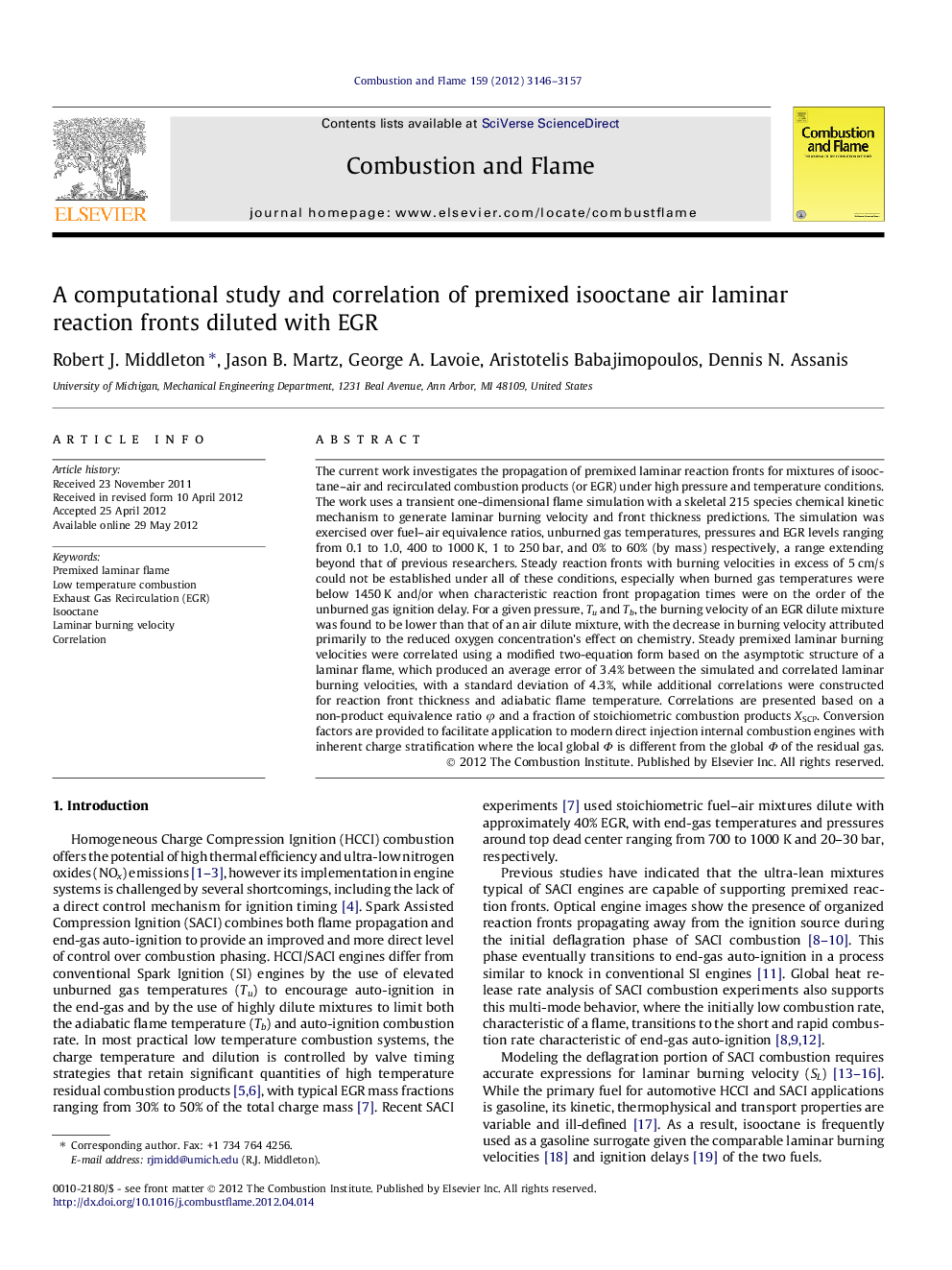| Article ID | Journal | Published Year | Pages | File Type |
|---|---|---|---|---|
| 169718 | Combustion and Flame | 2012 | 12 Pages |
The current work investigates the propagation of premixed laminar reaction fronts for mixtures of isooctane–air and recirculated combustion products (or EGR) under high pressure and temperature conditions. The work uses a transient one-dimensional flame simulation with a skeletal 215 species chemical kinetic mechanism to generate laminar burning velocity and front thickness predictions. The simulation was exercised over fuel–air equivalence ratios, unburned gas temperatures, pressures and EGR levels ranging from 0.1 to 1.0, 400 to 1000 K, 1 to 250 bar, and 0% to 60% (by mass) respectively, a range extending beyond that of previous researchers. Steady reaction fronts with burning velocities in excess of 5 cm/s could not be established under all of these conditions, especially when burned gas temperatures were below 1450 K and/or when characteristic reaction front propagation times were on the order of the unburned gas ignition delay. For a given pressure, Tu and Tb, the burning velocity of an EGR dilute mixture was found to be lower than that of an air dilute mixture, with the decrease in burning velocity attributed primarily to the reduced oxygen concentration’s effect on chemistry. Steady premixed laminar burning velocities were correlated using a modified two-equation form based on the asymptotic structure of a laminar flame, which produced an average error of 3.4% between the simulated and correlated laminar burning velocities, with a standard deviation of 4.3%, while additional correlations were constructed for reaction front thickness and adiabatic flame temperature. Correlations are presented based on a non-product equivalence ratio φ and a fraction of stoichiometric combustion products XSCP. Conversion factors are provided to facilitate application to modern direct injection internal combustion engines with inherent charge stratification where the local global Φ is different from the global Φ of the residual gas.
